-
Posts
390 -
Joined
-
Last visited
Content Type
Profiles
Forums
Events
Posts posted by papac2000
-
-
Excellent documentation. Nice looking finished product too! Can't wait for the review and vid if you get one.
Pretty sure you'll like the sound...
-
Great work Ty. Now lets put it on my bike and you can do another cut job for yours??
What are friends for after all?
-
Very nice, Ty. You have done a much more complete and thorough documentation of the process. I vote yours becomes the new reference! Looking forward to seeing the finished product.
-
Trunk Monkey...lol.
-
I don't really know. I wonder if it helps set up a flow path by straightening the bouncing waves into a column? And it looks cooler....
All I got is BS guesses here, but so was the method I used in the first place. It certainly wouldn't be critical if you did it either way.
-
If I was to do it all over again, I would use a small straight piece harvested from the "S" pipe and kinda duplicate the existing one that goes into the cat chamber. Its about 1.5in OD, but around 1.375in inside. It's an idea I wish I had tried.
-
Best of luck! A smaller cutoff disc tool may allow more precise cuts, if you can get one. Will be watching your progress with interest.
-
Used this for reference when mine were installed today as well. Thanks!
-
-
If someone attempts the suggested "less invasive" method, perhaps they could do a step by step HOW-TO. I guess my mod can serve as the pioneering groundwork for a prettier, more easily replicated method. The suggestions are there for how it could be improved upon for less cutting etc, and it would be better to use that new version IMO. I am more than happy with the results, both power gains and sound. YMMV
-
FJ 09 / MT 09 Tracer dyno 112whp:
Sorry for the poor quality...had to d/l it from FB.
-
Since the piece I am holding in the picture is a known entity, and we have a diameter measurement for that....he used that as the dimension for the opening from where it was cut off at the baffle. He then used the ratio posted to extrapolate the length it protrudes from the baffle. Not perfect perhaps, but there is some room for error here. At this point, since I am NOT cutting it all back apart again, there are a few choice for those who choose to replicate this mod.:oWhat did you get Papac? I didn't.
I'd be shot at work if I measured off the computer screen. 3D CAD & CAM for us!
Choice 1: Cut the top open and follow the procedure as I did it
Choice 2: Use the approximate dimensions derived from the sketches to do the "less invasive surgery" method and document to be the guinea pig and improve the community.
Choice 3: Wait until someone else does it and posts exact dimensions.
Have fun with it! Looking forward to someone's improved (prettier) version of this and their real world impressions of the sound first-hand, and riding impressions (as we still have too much damn snow).
-
Ah...got it.
-
If the photo were directly overhead I think your method would be sound. There is an angle to the view and the piece I am holding is closer to the lens. It gives an idea though. I would estimate 2 inches from the mounting bracket maybe instead of 1.82? Proceed at your own risk of course.
-
Measure the diameter of the pipe. The distance could then be interpolated.
It's actually not very round. Ranges from 1.475in to 1.5in OD.
-
Of course I never measured things as I did not consider this being done another way....LOL. The amount of pipe left behind is really inconsequential as it will no really be involved in the flow path any more. The issue here would be to choose a spot that would have the least chance of you coming in contact with the other pipes. The simplest might be to cut longitudinally along the top, in line with the inner weld of the mounting tab on the top (the one on the outlet side). This would still leave the baffle area exposed after to make the new hole. A more challenging location would be laterally to try to approximate my cut, but without a measurement, it could be tough. Not sure if it can be used to derive a dimension.....but I still have both the old outlet and the section from inside that was removed.
-
The lower tab stays attached to the muffler, not the outlet. If you look, the lower tab has standoffs that attach to the outlet pipe. Cut these standoffs, and then the lower tab stays connected to the muffler down at its base. Hope that helps.
-
I'm sure there could be more clever variations of the method. I guess as long as the slots work out in the right place its easier that way. One thing I would wonder about would be fishing the cut piece of pipe out the exit. If you don't cut through both pipes at the weld it may work out well. Thinking about it more, it could be done....I made my hole through the baffle after cutting the original outlet off, while the top was on.
-
Added some photos to earlier posts since I finally figured out my issues with embedding on my phone. (Default browser no workie...Chrome much gooder)
Cheers,
Chris
-
To clarify:when you cut behind the second weld, the inner pipe remains connected unless you cut all the way through the outer and inner. If you cut all the way through, there would be very little space between the two pipes. I believe I saw somewhere online where an FZ owner cut at the 3rd weld where the bulbous section attaches to the main muffler body, this would allow more working room perhaps, but I can't say how it would work out. It may not allow you to leave the lower bracket in place during the process either. You would also have to reweld the bulbous section back on after. I used a cutoff wheel to open the top of the main body. It gives you so much more room to work.
-
Ok, new question (I love this thread!): If one were to simply cut at the second weld, remove the outer tube, and use a dremel to cut off the inner tube as far up as possible, and somehow add another hole through the inner chamber (use the access from the second weld cut), and reweld on the new 2 inch piece, do you think that would yield the same results without having to cut the top off?
There were folks who tried a similar tactic on the FZ. Not sure how much success you would find getting the inner pipe cut back very far with such restricted access. I'm sure it would yield some increase in sound. I was just now thinking that there should be some kind of disclaimer on this thread....try this at your own risk etc.
-
I assume the "Cut here" weld cut removes the two pieces, discards the inner piece, and you rewelded on a bigger piece? Ah, I see in the latest photo all pieces are removed and the new 2" piece is welded on using the old tabs to mount the cover. The "Extra Hole here", does that just open up to the inner chamber, or do you drill all the way through the cat to the other side?
Correct. Just open a hole to the center chamber. In fact if you wanted you could use a short section of the s pipe to put a tube like the existing one into the chamber...but not necessary. Cat is lower down and to the right in the picture. You can kind of see a bluish circular pattern from the heat of it.
-
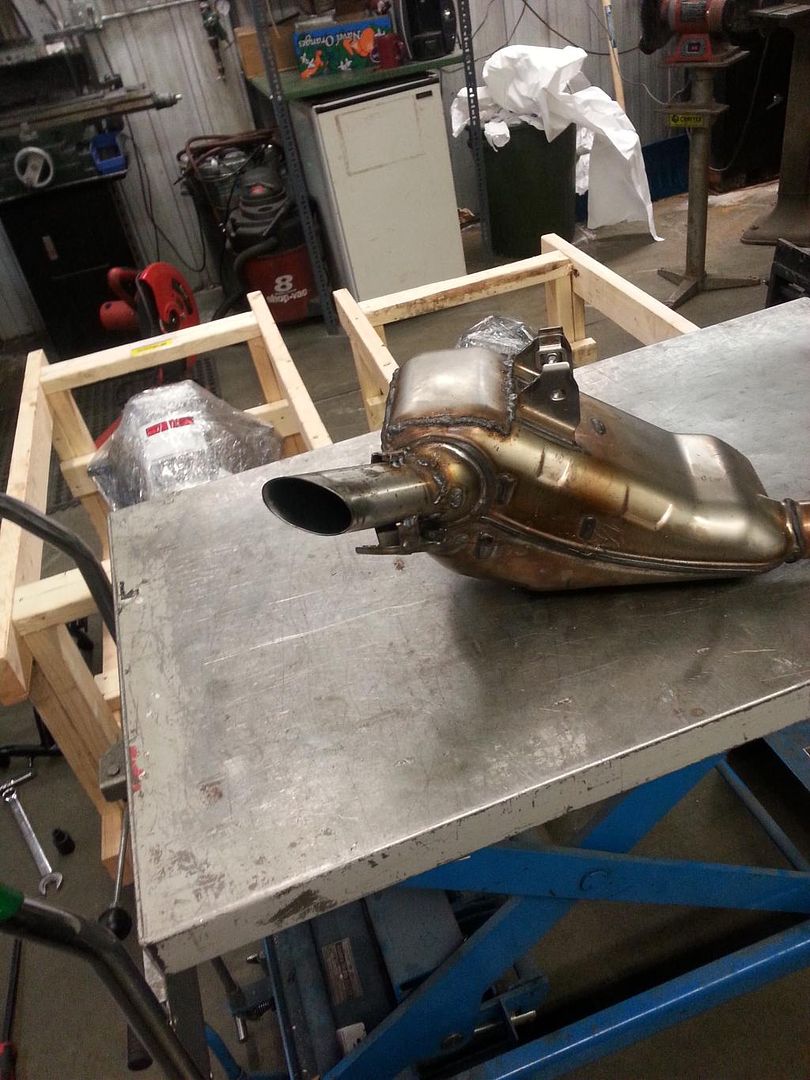
View of new outlet. I left the lower mounting bracket attached to the muffler and cut the two standoff "legs" right at the original outlet pipe. This way the outlet cover could be slipped back in place and used to make sure everything is in the right place. This also allows you to bolt the cover in place once the new outlet is installed and then you can use the hole on the top to mark the position of the center of the top mounting tab. Hope this helps.
Oh.... and please no comments on the weld quality. If they were in a more visible spot I would have had someone else do them. Its not my trade...lol. I had a friend take a crack at welding the outlet (I did the top panel) and it was no better.
-



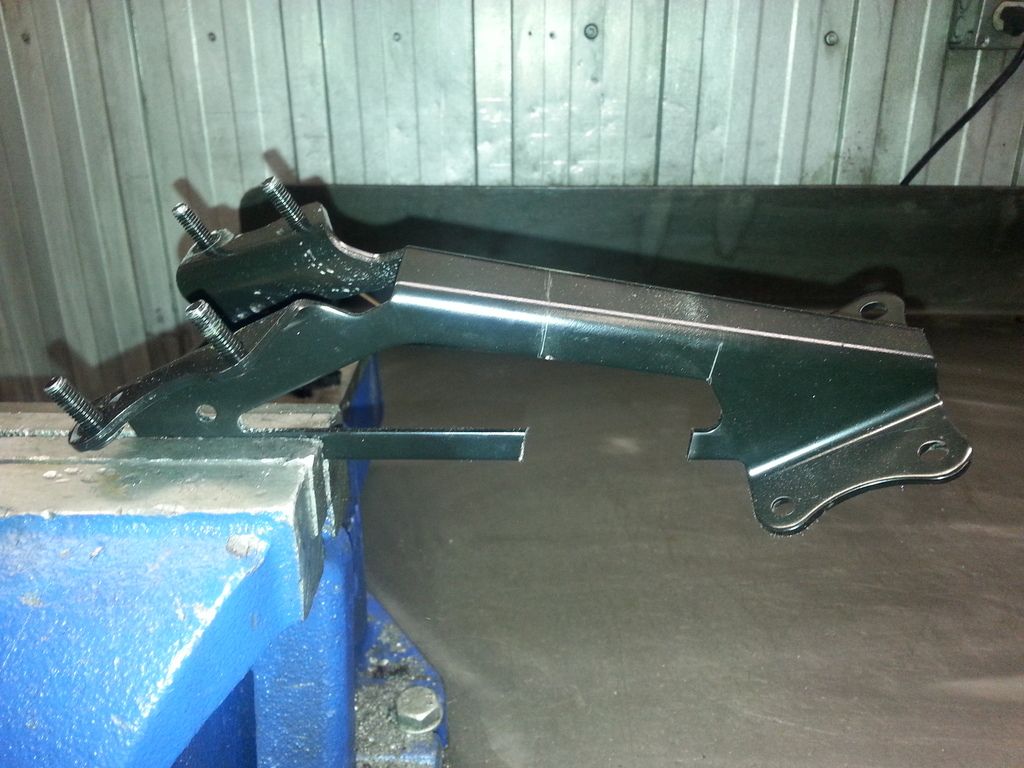
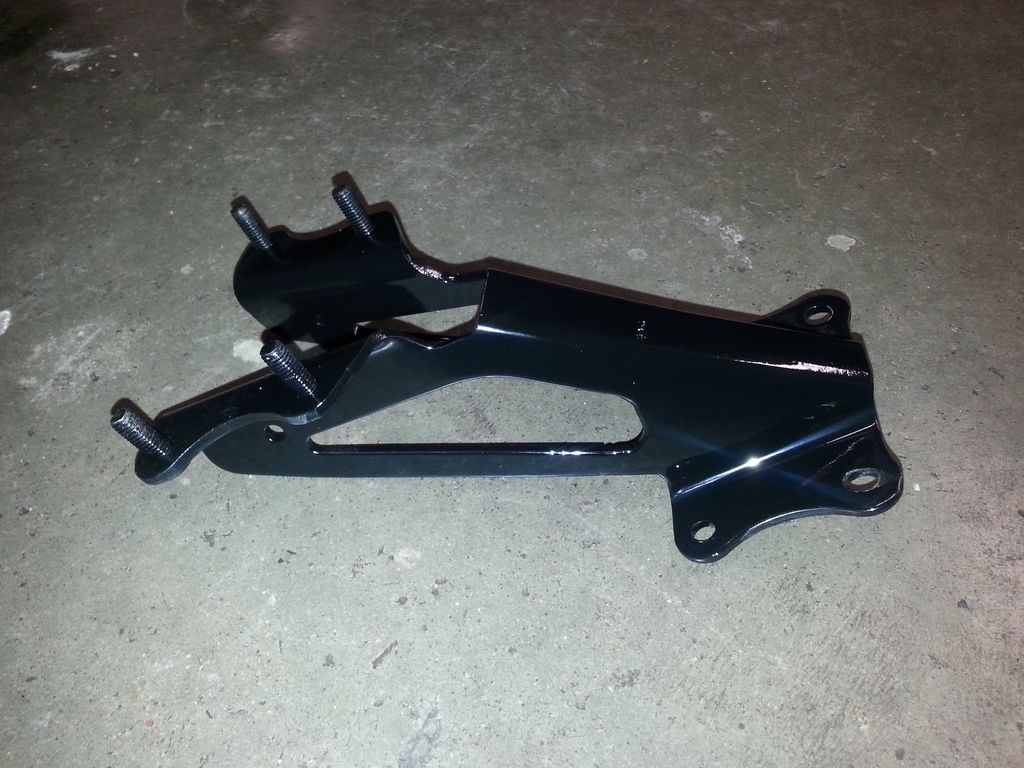
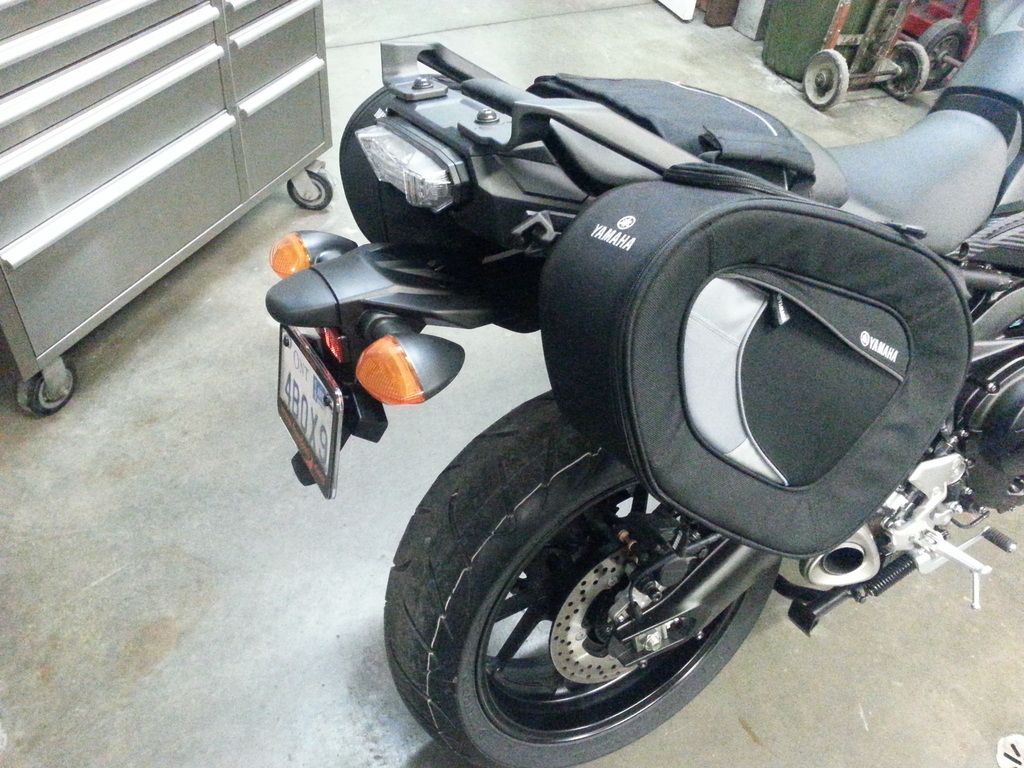
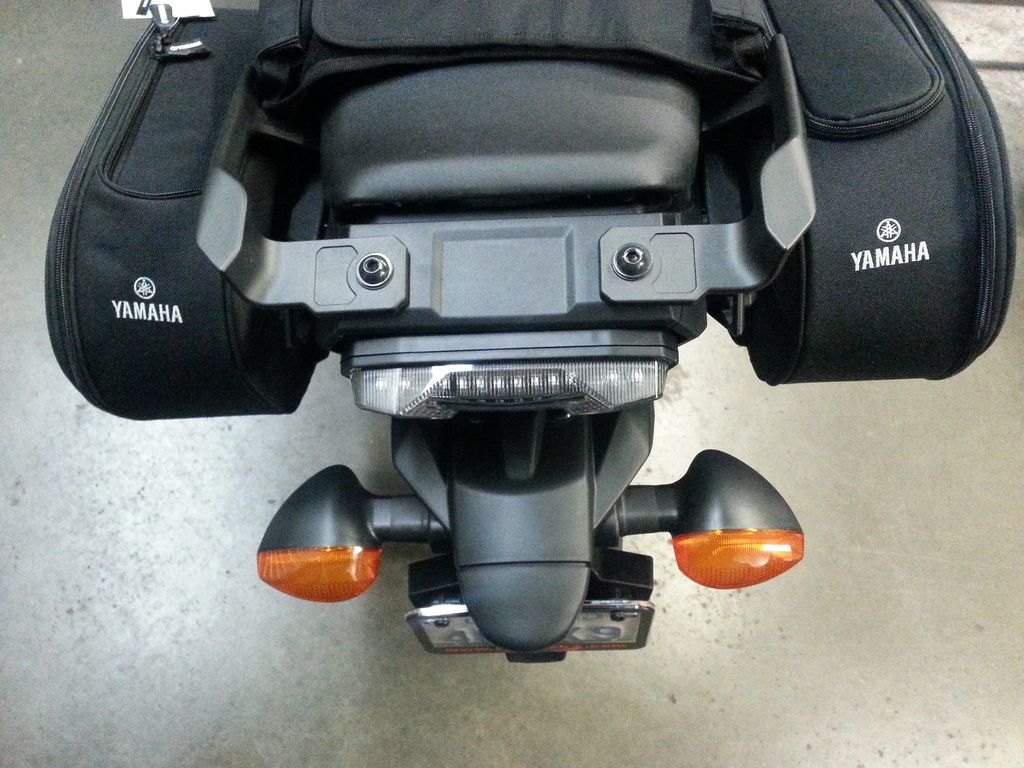
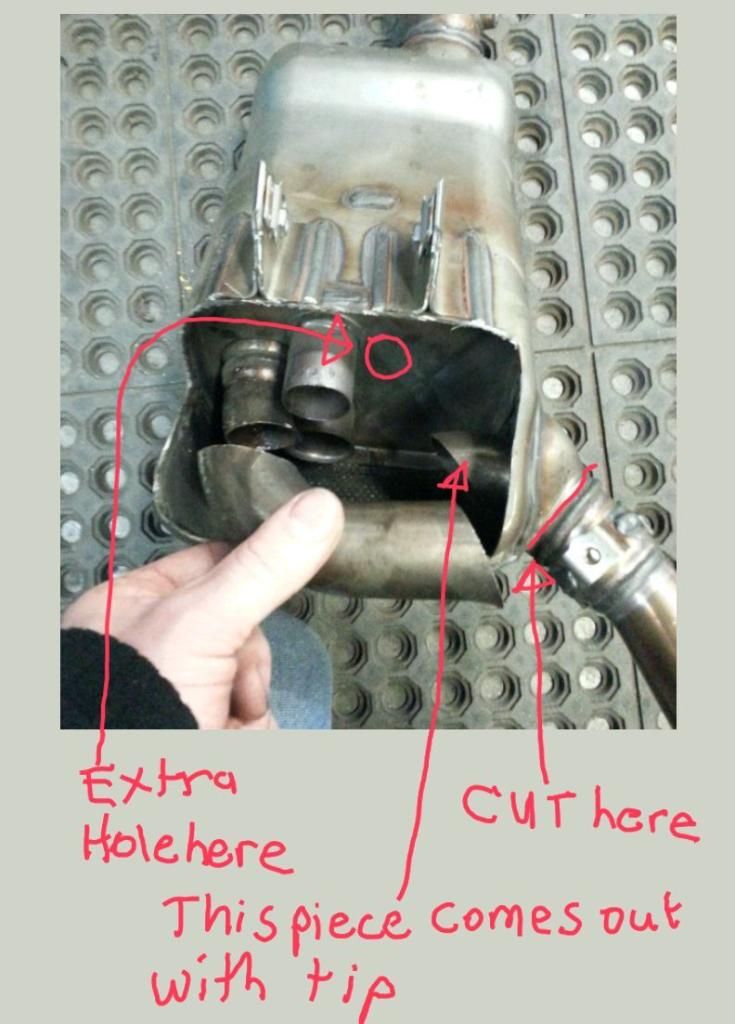
Inside the FJ muffler
in FJ-09 Exhaust
Posted